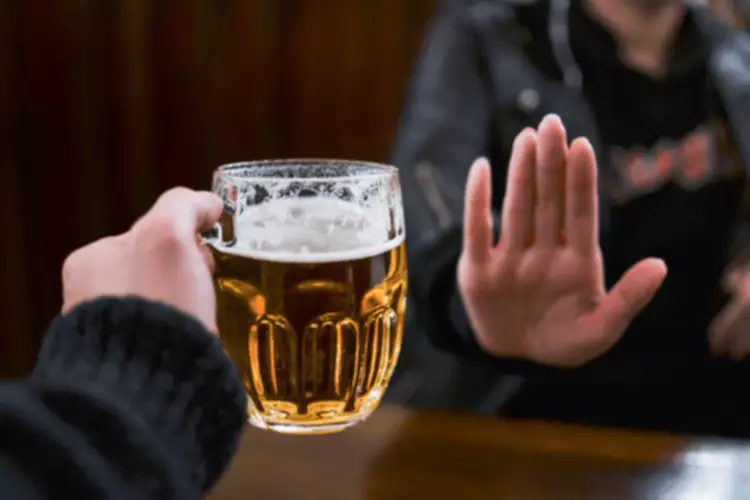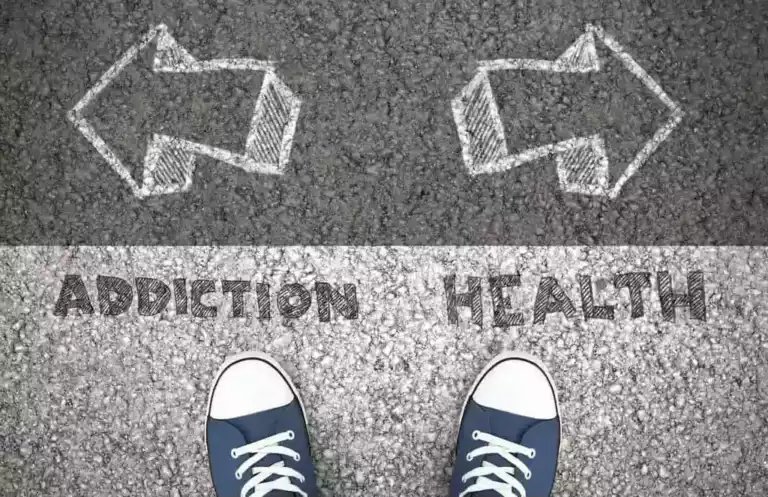
Antibodies detect and get rid of substances that are harmful to your body, including bacteria and viruses. Using the search terms « HMGB1 protein, » « alcohol, » and « brain, » the authors found 54 references in PubMed, 47 in Scopus, and 105 in Embase, for articles published between January 1991 and November 2022; the earliest article found was published in 2007. Searching PubMed for « brain » alone resulted in about 2 million papers, « alcohol-ethanol » alone found about 200,000 papers, and « HMGB1 » identified around 10,000 papers; combining the search terms reduced the number of papers to about 50.

How Alcohol Affects Your Seizure Risk
In addition, alcohol significantly inhibits PMN phagocytic activity as well as the production or activity of several molecules (e.g., superoxide or elastase) that are involved in the PMNs’ bactericidal activity (Stoltz et al. 1999), so that overall bactericidal activity ultimately is reduced. The first line of host defense involves both structural (i.e., epithelial) cells and immune cells (i.e., macrophages and dendritic cells) at mucosal surfaces. The epithelial cells function as a physical barrier as well as regulators of the innate and adaptive immunity. Particularly important are the epithelial immune barriers of the reproductive, GI, and respiratory tracts. Several lines of evidence suggest that alcohol abuse significantly disrupts the GI and respiratory tract immune barriers.
Impact of Alcohol Abuse on the Adaptive Immune System
But, when you drink more than 2 standard alcoholic drinks, the body shifts to the microsomal ethanol-oxidizing system (MEOS) to break down alcohol. This is not the first study to show the potential benefits of moderate alcohol consumption. Earlier this year, Medical News Today reported on a study suggesting that consuming a glass of wine a day may reduce the risk of depression, while other research suggests a compound found in red wine could help treat cancer. In addition to the Th1 response, alcohol appears to interfere with the Th17 response. For example, following an infectious challenge, acute alcohol can suppress alveolar macrophage expression of IL-23, which helps activate naïve T-cells to differentiate into Th17 cells (Happel et al. 2006). Similarly, as with the Th1 responses, alcohol inhibits the ability of dendritic cells to promote Th17 responses, thereby favoring Th2 responses (Heinz and Waltenbaugh 2007).
Effects on B-Cells
Binge drinking — defined as more than four drinks for women or five drinks for men in two hours — can also trigger a long-lasting genetic change. This can result in heightened cravings for alcohol that can lead to alcohol addiction, Sarkar explains. If you drink more than 12 units of alcohol, you’re at considerable risk of developing alcohol poisoning, particularly if you’re drinking many units over a short period of time. Consuming alcohol likely slows your recovery since your immune system isn’t functioning at optimal levels when you are drinking. The bottom line is, it is best to avoid drinking during illness if you want to feel better quicker. Tolerance and dependence can both happen as symptoms of alcohol use disorder, a mental health condition previously referred to as alcoholism, that happens when your body becomes dependent on alcohol.
How does drinking alcohol affect health?
They note, too, that a fully functioning immune system is vital to the success of conventional chemotherapy. The clinical management of all of these conditions may be more challenging in individuals who misuse alcohol because of coexisting immune impairment. To this end, heavy drinkers have been shown to exhibit an increase in both IgA and IgM levels when compared to both moderate and light male drinkers.
- This kindling effect can also occur after chemical stimulus to the brain or body, such as anti-convulsant medication.
- Similarly, the incidence of Mycobacterium tuberculosis infection among alcoholics is increased (Sabot and Vendrame 1969, Hudolin 1975, Kline, Hedemark et al. 1995, Panic and Panic 2001).
- This part of the immune response is specific to one particular pathogen and also creates an “immune memory” that allows the body to respond even faster and more effectively if a second infection with the same pathogen occurs.
- SCFAs can bind to G-protein-coupled receptors as FFAR2 and FFAR3 present on the surface of gut epithelial cells and immune cells including dendritic cells, macrophages and neutrophils, and are therefore important regulators of inflammatory response.
- Steatotic liver disease develops in about 90% of people who drink more than 1.5 to 2 ounces of alcohol per day.
Alcohol and Structural Host Defense Mechanisms
Molina and colleagues review research showing that alcohol impairs recovery from three types of physical trauma—burn, hemorrhagic shock, and traumatic brain injury—by affecting immune homeostasis. Their article also highlights how the combined effect of alcohol and injury causes greater disruption to immune function than either challenge alone. Each of these events is mediated by the activation of nuclear factor kappa B (NFκB), which can be inhibited by alcohol consumption and thus prevent the production of pro-inflammatory cytokines. In vivo studies have confirmed that binge drinking with a blood alcohol concentration (BAC) of approximately 0.4% can reduce the production of various inflammatory cytokines including interleukin-6 (IL-6), IL-10, and IL-12.

The First Line of Defense: The Effects of Alcohol on Post-Burn Intestinal Barrier, Immune Cells, and Microbiome
Similarly, more work is needed to determine whether alcohol inhibits specific aspects of B-cell differentiation, such as immunoglobulin class switching and cell survival. Alcohol-mediated effects on CD8+ T-cell function also have been linked to impaired immunity in the lung does drinking alcohol weaken your immune system in response to influenza infection (Meyerholz et al. 2008). Whether the increased viral load measured in SIV-infected chronic alcohol-fed macaques can be attributed to diminished CD8+ T-cell function remains to be established (Bagby et al. 2006; Kumar et al. 2005).
- These micronutrients have been shown to play an important role in immune system homeostasis and response to infection (Mora, Iwata et al. 2008).
- Here, alcohol can damage the epithelial cells, T-cells, and neutrophils in the GI tract, all of which can alter the gut barrier function and allow intestinal microorganisms to leak into circulation.
- Not only will drinking alcohol reduce your immune system’s strength, but alcohol also has a dehydrating effect.
- Evidence supports that epigenetic gene-regulating mechanisms such as histone methylation are involved in causing microglial and astrocyte sensitization or priming that increases pro-inflammatory gene expression, including TLR and other genes.
- Such studies can be challenging to conduct in humans because of difficulties in obtaining accurate medical histories, maintaining adherence, confounding factors such as diet, sleep-wake cycles, and ethical considerations when studying large doses of ethanol.
- Extremely heavy drinking — about 30 drinks per day — can throw off the balance of immune system cells.
Mental health
Long-term alcohol use can affect bone density, leading to thinner bones and increasing your risk of fractures if you fall. If your body can’t manage and balance your blood sugar levels, you may experience greater complications and side effects related to diabetes. Alcohol use can begin to take a toll on anyone’s physical and mental well-being over time. These effects may be more serious and more noticeable if you drink regularly and tend to have more than 1 or 2 drinks when you do. Alcohol can cause both short-term effects, such as lowered inhibitions, and long-term effects, including a weakened immune system.
- Each of those consequences can cause turmoil that can negatively affect your long-term emotional health.
- The connection between alcohol consumption and your digestive system might not seem immediately clear.
- These events depend on the activation of the nuclear factor kappa B (NFκB) heterodimer p50–p65 and its translocation to the nucleus leading to the expression and production of pro-inflammatory cytokines such as interleukin (IL)-1β, IL-6, IL-12, and tumor necrosis factor (TNF)-α (Hoffmann, Natoli et al. 2006, Janeway 2008).
- Increased apoptosis of T and B lymphocytes isolated from the thymus, spleen, and lymph nodes of female mice was observed following 16 hour culture with 0.4%-2% ethanol, concentrations 5 to 25 times the definition of intoxication (Slukvin and Jerrells 1995).
- Monocytes express Toll-like receptor (TLR) 4, which is the PRR responsible for recognizing the endotoxin LPS on the surface of Gram negative bacteria.
Effects of alcohol on adaptive immunity

Research has shown that when alcohol is removed from the body, it activates brain and nerve cells, resulting in excessive excitability (hyperexcitability). After drinking 10 to 12 units of alcohol, your co-ordination will be highly impaired, placing you at serious risk of having an accident. The high level of alcohol has a depressant effect on both your mind and body, which makes you drowsy. The alcohol also impairs the cells in your nervous system, making you feel lightheaded and adversely affecting your reaction time and co-ordination. It is no surprise that the key to boosting your immune system is a healthy lifestyle—which includes good nutrition, plenty of sleep, regular exercise, no smoking, and avoidance of stress.12 And if you drink alcohol, drinking in moderation is also on the list. Although you may experience some enjoyable effects from alcohol, you are likely aware of the potential harm over-consumption can do to your body.
The Timeline of Alcohol Withdrawal

Binge drinking is defined as consuming enough alcohol to become intoxicated, which is defined by a blood ethanol concentration of 80 mg/dL, or approximately 4–5 drinks within 2 hours. Extreme binge drinking, or high-intensity drinking, is defined as consuming at least twice as much (i.e., 10–15+ drinks) per occasion. This increased susceptibility has been recapitulated in rodent models of chronic alcohol abuse. For instance, increased morbidity and mortality, pulmonary virus titers, and decreased pulmonary influenza-specific CD8 T cell responses were reported in female mice infected with influenza that consumed 20% (w/v) ethanol in their drinking water for 4–8 weeks (Meyerholz, Edsen-Moore et al. 2008).
